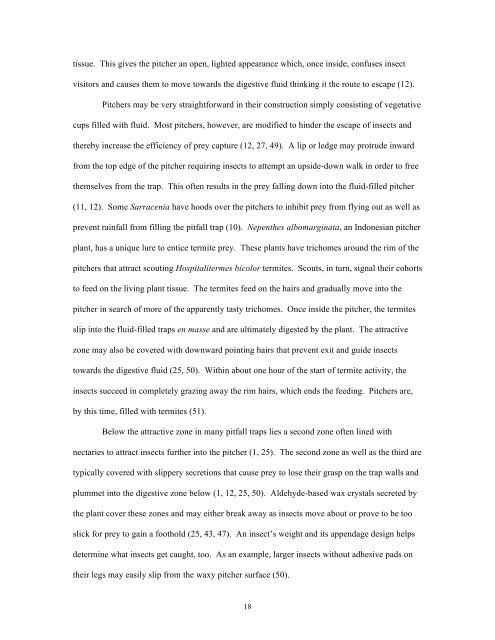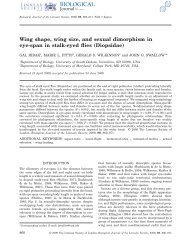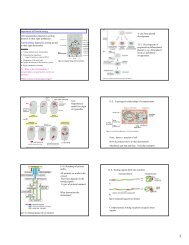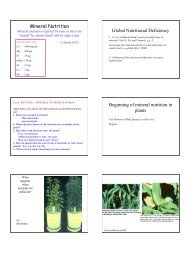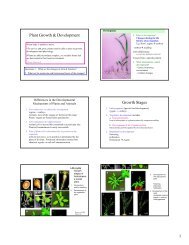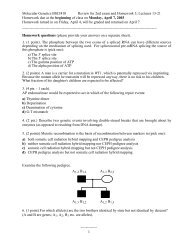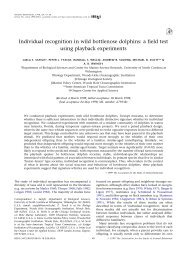Carnivorous Plants and Their Prey
Carnivorous Plants and Their Prey
Carnivorous Plants and Their Prey
Create successful ePaper yourself
Turn your PDF publications into a flip-book with our unique Google optimized e-Paper software.
tissue. This gives the pitcher an open, lighted appearance which, once inside, confuses insect<br />
visitors <strong>and</strong> causes them to move towards the digestive fluid thinking it the route to escape (12).<br />
Pitchers may be very straightforward in their construction simply consisting of vegetative<br />
cups filled with fluid. Most pitchers, however, are modified to hinder the escape of insects <strong>and</strong><br />
thereby increase the efficiency of prey capture (12, 27, 49). A lip or ledge may protrude inward<br />
from the top edge of the pitcher requiring insects to attempt an upside-down walk in order to free<br />
themselves from the trap. This often results in the prey falling down into the fluid-filled pitcher<br />
(11, 12). Some Sarracenia have hoods over the pitchers to inhibit prey from flying out as well as<br />
prevent rainfall from filling the pitfall trap (10). Nepenthes albomarginata, an Indonesian pitcher<br />
plant, has a unique lure to entice termite prey. These plants have trichomes around the rim of the<br />
pitchers that attract scouting Hospitalitermes bicolor termites. Scouts, in turn, signal their cohorts<br />
to feed on the living plant tissue. The termites feed on the hairs <strong>and</strong> gradually move into the<br />
pitcher in search of more of the apparently tasty trichomes. Once inside the pitcher, the termites<br />
slip into the fluid-filled traps en masse <strong>and</strong> are ultimately digested by the plant. The attractive<br />
zone may also be covered with downward pointing hairs that prevent exit <strong>and</strong> guide insects<br />
towards the digestive fluid (25, 50). Within about one hour of the start of termite activity, the<br />
insects succeed in completely grazing away the rim hairs, which ends the feeding. Pitchers are,<br />
by this time, filled with termites (51).<br />
Below the attractive zone in many pitfall traps lies a second zone often lined with<br />
nectaries to attract insects further into the pitcher (1, 25). The second zone as well as the third are<br />
typically covered with slippery secretions that cause prey to lose their grasp on the trap walls <strong>and</strong><br />
plummet into the digestive zone below (1, 12, 25, 50). Aldehyde-based wax crystals secreted by<br />
the plant cover these zones <strong>and</strong> may either break away as insects move about or prove to be too<br />
slick for prey to gain a foothold (25, 43, 47). An insect’s weight <strong>and</strong> its appendage design helps<br />
determine what insects get caught, too. As an example, larger insects without adhesive pads on<br />
their legs may easily slip from the waxy pitcher surface (50).<br />
18


